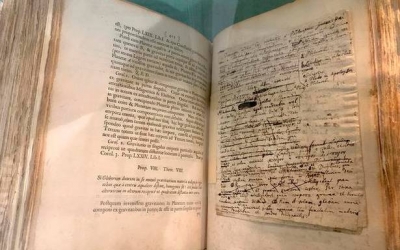
Isaac Newton is among the most famous personalities in science. The legend of an apple falling on his head, leading him to develop his law of universal gravitation, is also equally popular. We all study the laws of motion framed by him that form the foundation of classical mechanics during our schooling days.
Newton’s laws of motion and law of universal gravitation were part of Philosophiae Naturalis Principia Mathematica (Mathematical Principles of Natural History) that comprises three books. First published in Latin, this work, which is popularly referred to as just Principia, is among the most important works in the history of science.
Born in 1642 near Grantham, England, Newton was the son of a farmer. Having studied Science and Mathematics after entering Cambridge University in 1661, Newton was forced to move back to his childhood home following the outbreak of the bubonic plague.
Did the apple really fall on his head?
It was during this period that Newton witnessed an apple drop from a tree while at an orchard. There’s no evidence to suggest that it actually fell on his head, but the incident certainly led him to think as to why they fall straight downwards, and not upwards or sideways. And once he started thinking, the fundamental principles of the theory of gravitation fell in place. In other words, the seeds for Newton’s magnum opus were laid when that apple fell to the ground.
Fast forward a couple of decades, and in August 1684 British astronomer Edmond Halley (the same Halley after whom the famous comet is named) visited Newton to consult with him about the law of gravitation in general and orbital dynamics of planets in particular. Newton was able to tell him that the orbit of a planet would be an ellipse and was also able to send a demonstration of his findings by November. These, along with notes about the laws of motion, were published as a paper entitled De Motu (On Motion) in February 1685 by the Royal Society.
The spark Newton needed
Halley’s visit turned out to be the spark that Newton required to attack the problem of gravitation with newfound vigour and publish his results. He completed the draft of the first book, which covered the motion of particles or bodies in free space, before the summer of 1685. It wasn’t until April 1686, however, that the book was presented to the Royal Society.
The next book, which looked at motion in a resisting medium along with hydrostatics and hydrodynamics, was ready by the summer of 1686. Ten months later, Newton had completed the third book of the Principia in which he had determined the masses and distances of the planets and their satellites in the solar system.
The actual printing of the three books, which was funded mainly by Halley, wasn’t completed until the summer of 1687 and it was on July 5, 1687 that Newton’s Principia was first published. It wasn’t long before Newton’s stature rose to one of international prominence. It certainly took longer to alter the beliefs of the common people and completely assimilate all his work into the field of maths and science.
As for the Principia, it enjoys a unique position of being considered the building block for most of modern science. A preliminary census conducted in 2020 was able to identify 387 surviving copies of the first edition of Newton’s masterpiece. Even though an exact estimate of the initial print run hasn’t been possible, it is clear that the revered Latin text has always been held in high regard.
Picture Credit : Google



